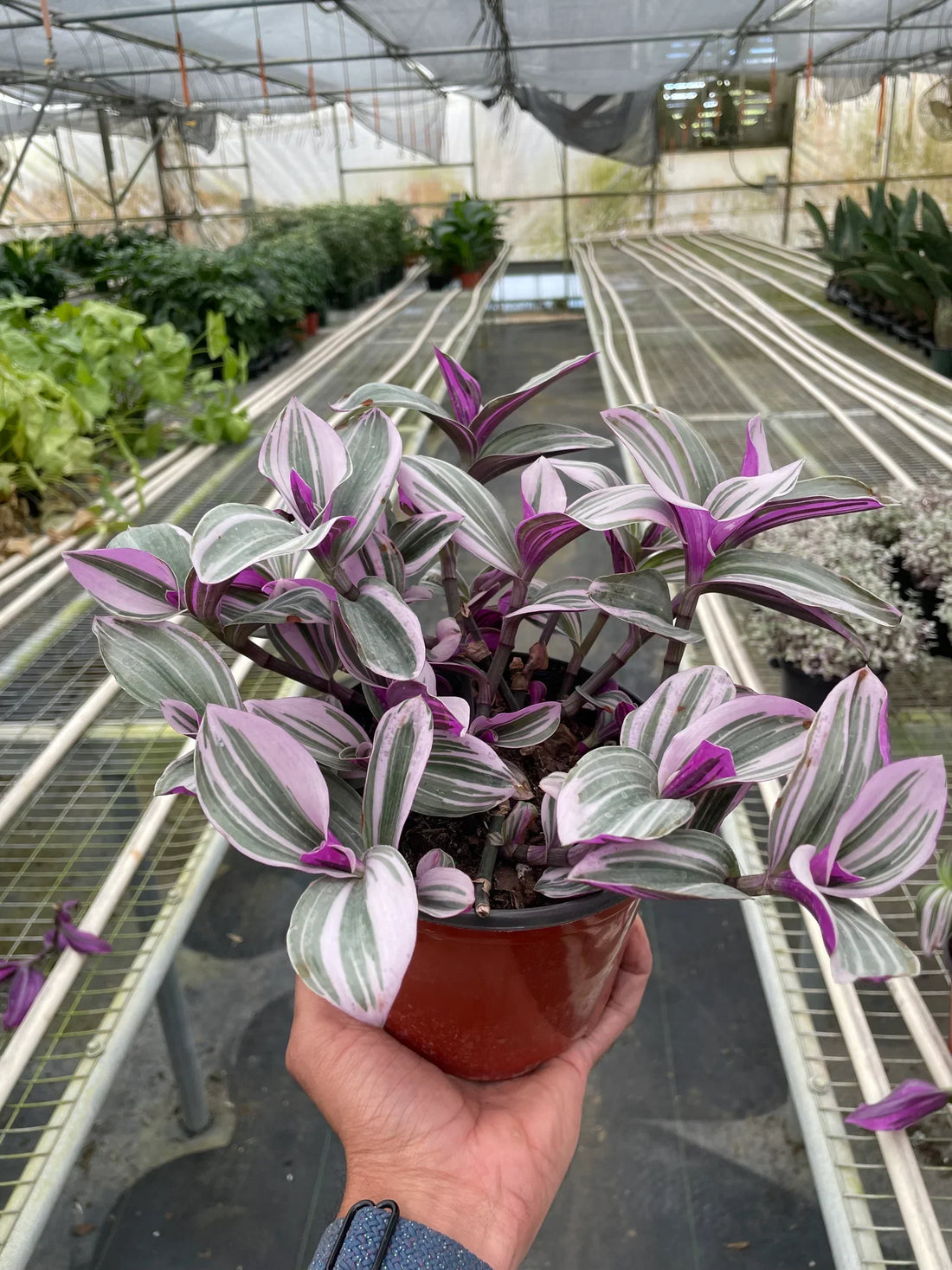
How to Care for the Wandering Jawns
Share
Taming the Tendrils: Your Ultimate Guide to Wandering Jawn Plant Care
The Wandering Jawn (Tradescantia zebrina, often also called Inch Plant) is a vibrant, eye-catching houseplant known for its striking purple and silver striped leaves and its vigorous, trailing growth. It's a popular choice for beginners and experienced plant parents alike, thanks to its relatively easy care and dramatic appearance. But even the most low-maintenance plants thrive with a little TLC. So, if you're looking to keep your Wandering jawn happy and healthy, you've come to the right place!
Light: Finding the Sweet Spot
Wandering Jawns love bright, indirect light. Think of a sunny window where the plant isn't getting direct afternoon sun. Too little light, and the vibrant purple hues will fade, and the plant will become leggy. Too much direct sun, and the leaves can scorch. A telltale sign of insufficient light is the loss of the vibrant purple color; the leaves may become more green.
Watering: The Balancing Act
Watering is arguably the trickiest part of Wandering jawn care. They prefer consistently moist soil, but not soggy. Overwatering is the quickest way to root rot, which can be fatal. A good rule of thumb is to water when the top inch or two of soil feels dry. Thoroughly water until water drains out the bottom of the pot, and then discard any excess water. During the winter months, when the plant's growth slows down, you can reduce watering slightly.
Soil: Well-Draining is Key
Just like with watering, well-draining soil is crucial. A standard potting mix designed for houseplants is usually fine. You can also amend it with perlite or orchid bark to improve drainage. Avoid heavy soils that retain too much moisture.
Temperature and Humidity: Keeping it Comfortable
Wandering Jawns enjoy average room temperatures (65-80°F or 18-27°C). They aren't particularly fussy about humidity, but they will appreciate a little boost, especially in dry climates. You can provide this by misting the leaves occasionally or placing a humidifier nearby. Avoid placing your plant near drafts or sudden temperature changes.
Fertilizing: A Little Boost Goes a Long Way
During the growing season (spring and summer), feed your Wandering jawn with a balanced liquid houseplant fertilizer diluted to half strength every 4-6 weeks. Avoid fertilizing during the winter months when the plant's growth slows down.
Pruning: Encouraging Bushiness
Wandering Jawns are known for their trailing growth, which can become leggy over time. Regular pruning will encourage bushier growth and keep your plant looking its best. Simply pinch or snip off the tips of the stems. Don't be afraid to prune; this plant is very forgiving! And the best part? You can easily propagate the cuttings to create new plants!
Propagation: Sharing the Love
Propagating Wandering Jawns is incredibly easy. Simply take a cutting, remove the lower leaves, and place it in water or directly into moist soil. You'll have new plants in no time! This makes it a great plant to share with friends and family.
Pests and Diseases: Keeping an Eye Out
Wandering Jawns are relatively pest-resistant, but they can occasionally be susceptible to common houseplant pests like spider mites, mealybugs, and aphids. Regularly inspect your plant for any signs of infestation and treat accordingly. Root rot, as mentioned earlier, is the most common issue, and it's usually caused by overwatering.
Troubleshooting: Common Issues and Solutions
-
Leaves turning brown: This could be due to underwatering, direct sunlight, or low humidity.
-
Loss of purple color: Insufficient light is the most likely culprit.
-
Leggy growth: This indicates a need for more light or pruning.
-
Drooping leaves: This could be a sign of overwatering or underwatering.
Final Thoughts
The Wandering Jawn is a beautiful and rewarding houseplant that's perfect for adding a touch of vibrant color to your home. With a little attention to its basic needs, you'll be rewarded with a thriving plant that you can enjoy for years to come. So, go ahead and embrace the wandering ways of this fantastic plant!